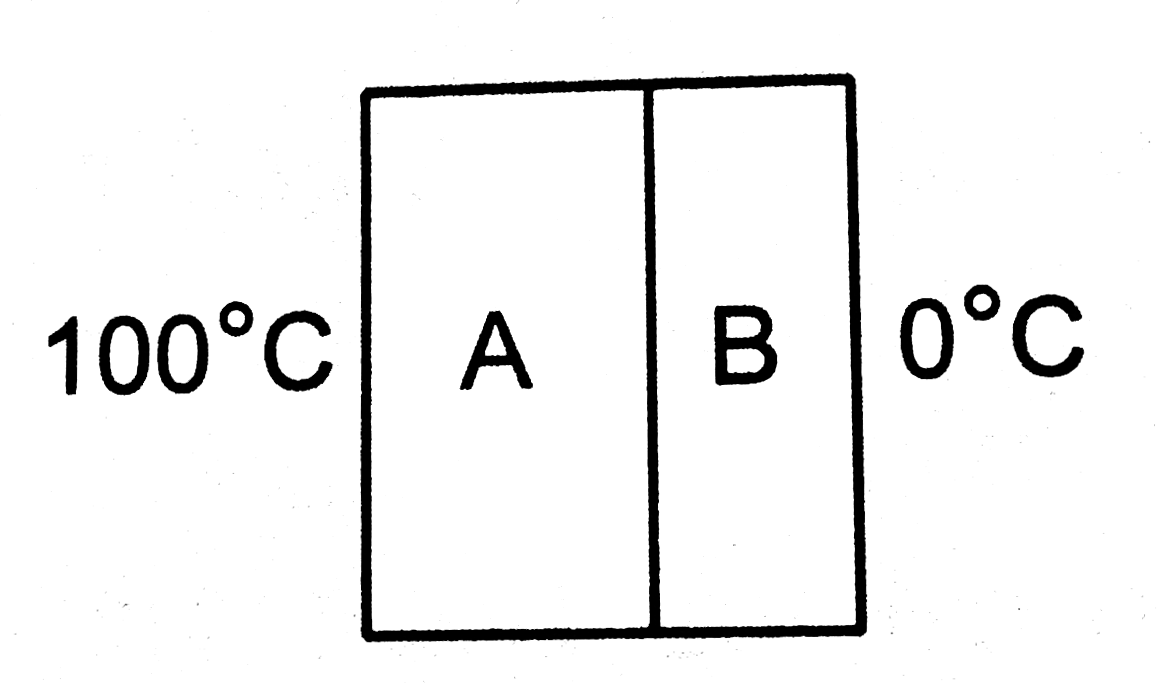The thickness of a metallic plate is 0.4 cm. The temperature between its two surfaces is 20∘C. The quantity of heat flowing per second is 50 calories from 5cm2 area. In CGS system, the coefficient of thermal conductivity will be
0.2
0.3
0.4
0.5
The correct Answer is:A
We know that
Qt=KA(Δθ)t
50=5×20K0.4 or K=50×0.45×20=0.2
Topper's Solved these Questions
- CALORIMETRY AND HEAT TRANSFERBook:DC PANDEYChapter:CALORIMETRY AND HEAT TRANSFERExercise:Match the columns
Explore 4 Videos
- CALORIMETRY & HEAT TRANSFERBook:DC PANDEYChapter:CALORIMETRY & HEAT TRANSFERExercise:Level 2 Subjective
Explore 14 Videos
- CENTRE OF MASSBook:DC PANDEYChapter:CENTRE OF MASSExercise:Medical entrances gallery
Explore 27 Videos
Similar Questions
Two plates of equal areas are placed in contact wih each other. Their thickness are 2.0 cm and 5.0 cm respectively. The temperature of the external surface of the first plate is −20∘C and that of the external surface of the second plate is 20∘C. What will be the temperature of the current surface if the plates (i) are of the same material, (ii) have thermal conductivities in the ratio 2:5.
View SolutionTwo parallel plates A and B are joined together to form a compound plate . The thicknesses of the plate are 4.0cm and 2.5cm respectively and the area of cross section is 100cm2 for each plate. The thermal conductivities are KA=200Wm−1^(@)C^(-1)forthepa<eB.TheoutersurfaceoftheplateAisma∫a∈≠dat100^(@)CandtheoutersurfaceoftheplateAisma∫a∈edat100^(@)C . and the outer surface of the plate B is maintained at 0^(@)C. Find (a) the rate of heat flow through any cross section, (b) the temperature at the interface and (c) the equivalent thermal conductivity of the compound plate.

View Solution
Knowledge Check
One end of a metal rod of length 1.0 m and area of cross section 100cm2 is maintained at . 100∘C. If the other end of the rod is maintained at 0∘C , the quantity of heat transmitted through the rod per minute is (Coefficient of thermal conductivity of material of rod =100W/m−K)
A3×103JB6×103JC9×103JD12×103JThe human body transports heat from the interior tissues, at temperature 37.0∘C, to the skin surface, at temperature 27.0∘C, at a rate of 100 W. If the skin area is 1.5m2 and its thickness is 3.0 mm, what is the effective thermal conductivity, k, of skin?
A4.0×10−2W/(mk)B2.0×10−2W/(mk)C2.0×10−3W/(k)D3.0×10−2W/(mk)A rod of 40 cm in length and temperature difference of 80∘C at its two ends. Another rod B of length 60cm and of temperature difference 90∘C, having the same area of cross-section. If the rate of flow of heat is the same, then the ratio of their thermal conductivities will be
A3:4B4:3C1:2D2:1
One mode of an ideal monatomic gas is kept in a rigid vessel. The vessel is kept inside a steam chamber whose temperature is 97∘C . Initially, the temperature of the gas is 5.0∘C . The walls of the vessel have an inner surface of area 800cm2 and thickness 1.0cm If the temperature of the gas increases to 9.0∘C in 0.5 second, find the thermal conductivity of the material of the walls.
View SolutionIn a house the temperature at the surface of a window is 25∘C The temperatuere outside at the window surface is 5.0∘C .Heat is lost through the window via conduction, and the heat lost per second has a certain value. The temperature outside begins to fall, while the conditions inside the house remain the same. As a result, the heat lost per second increases. What is the temperature at the outside window surface when the heat lost per second doubles ?
View SolutionCalculate the rate of loss of heat through a glass window of area 1000cm2 and thickness 0.4 cm when temperature inside is 37∘C and outside is −5∘)C . Coefficient of thermal conductivity of glass is 2.2×10−3cals−1cm−1K−1.
View Solution‘cold box’ in the shape of a cube of edge 50 cm is made of ‘thermocol’ material 4.0 cm thick. If the outside temperature is 30∘C the quantity of ice that will melt each hour inside the ‘cold box’ is : (the thermal conductivity of the thermocol material is 0.050 W/mK)
View SolutionA metal plate has an area of 10m2 . On raising its temperature by 20∘C . The change in area if the coefficient of linear expansion is a, will be
View Solution

